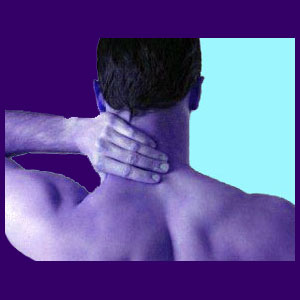
Degenerative disc disease neck pain is a very rare actual occurrence, although disc degeneration is unfairly blamed for sourcing many upper dorsopathy complaints. Cervical degenerative disc disease is a normal part of aging and there is little, if any, evidence which links DDD to the incidence of back pain or neck pain. In fact, as disc degeneration progresses to ever more severe expressions, the incidence of back or neck pain actually drops with age. This is a statistical fact and is supported by the drastic drop off of definitively symptomatic disc desiccation diagnoses after the age of 60.
This essay provides a critical analysis of neck pain diagnoses that are blamed on normal disc deterioration.
Degenerative Disc Disease Neck Pain Theory
Doctors theorize that since the discs lose height, mass and their ability to hold moisture, that some painful back or neck symptoms must be caused by the degenerative process. Usually, the diagnosis will be foraminal stenosis, since the vertebral bones get closer together from DDD.
Sometimes, spinal arthritic osteophytes will form as a result of DDD, leading to a diagnosis of arthritis back pain or spinal stenosis. These might be viable theories to explain pain in some patients, although the DDD may still not be causative or contributory in a significant way.
In almost every case, back or neck pain experienced in conjunction with DDD is coincidental to the structural changes, since disc degeneration affects every one of us on this planet. It is crucial to remember that the discs themselves have no sensory perception or interior nerve endings.
DDD Neck Pain Treatment
There are a great number of symptomatic back and neck pain treatments for disc disease, but none will do anything to actually cure the condition. The only methods which might do anything to reduce the anatomical effects of degeneration are spinal decompression and back surgery.
Undergoing degenerative disc disease surgery is almost always a ridiculous notion, since even if one level is treated, the rest of the spine will continue to degenerate. Worse yet, if spinal fusion is used to treat the condition, the rate of degeneration will actually be extremely accelerated in nearby spinal levels, resulting in a possibly endless number of fusion procedures until the entire vertebral column is dysfunctional.
The other option, artificial disc replacement surgery, is more enlightened, but is still virtually never needed for DDD patients. Disc nucleus replacement may be better yet, but medical science is still working on this theoretic solution.
Degenerative Disc Disease Neck Pain Tips
The intervertebral discs in the neck are thin and small before aging takes a toll. They also suffer increased degeneration due to the constant wear and tear imposed by the bending and flexing of the neck. This is normal. So many patients say to us: “I really have DDD. I am not imagining it. I see it on the X-ray”.
Yes, no kidding. I have it too. Your doctor has it. Your teenage children might have it. We all have it. Get over it. It is normal.
It is a simple and well known fact that cervical degenerative disc disease is rarely symptomatic. It is also well known in the back pain industry that the condition offers an excellent scapegoat, since it is always going to be an old standby when a diagnosis is needed.
Learn the facts of degenerated discs for yourself.
If your DDD diagnosed neck pain has not resolved despite several treatments, it may be wise to reconsider the diagnosis. This is the first step you can take in the right direction. If the pain does resolve with conservative care, then ask yourself how the treatment has caused the discs to rehydrate and rejuvenate. Simply illogical. You will see that the pain may be gone, but the discs will still be the same, once again reinforcing the obvious diagnostic blunder in most patients. If it was not for the placebo effect, many medical treatments would demonstrate no efficacy at all.
Back Pain > Degenerative Disc Disease > Degenerative Disc Disease Neck Pain




